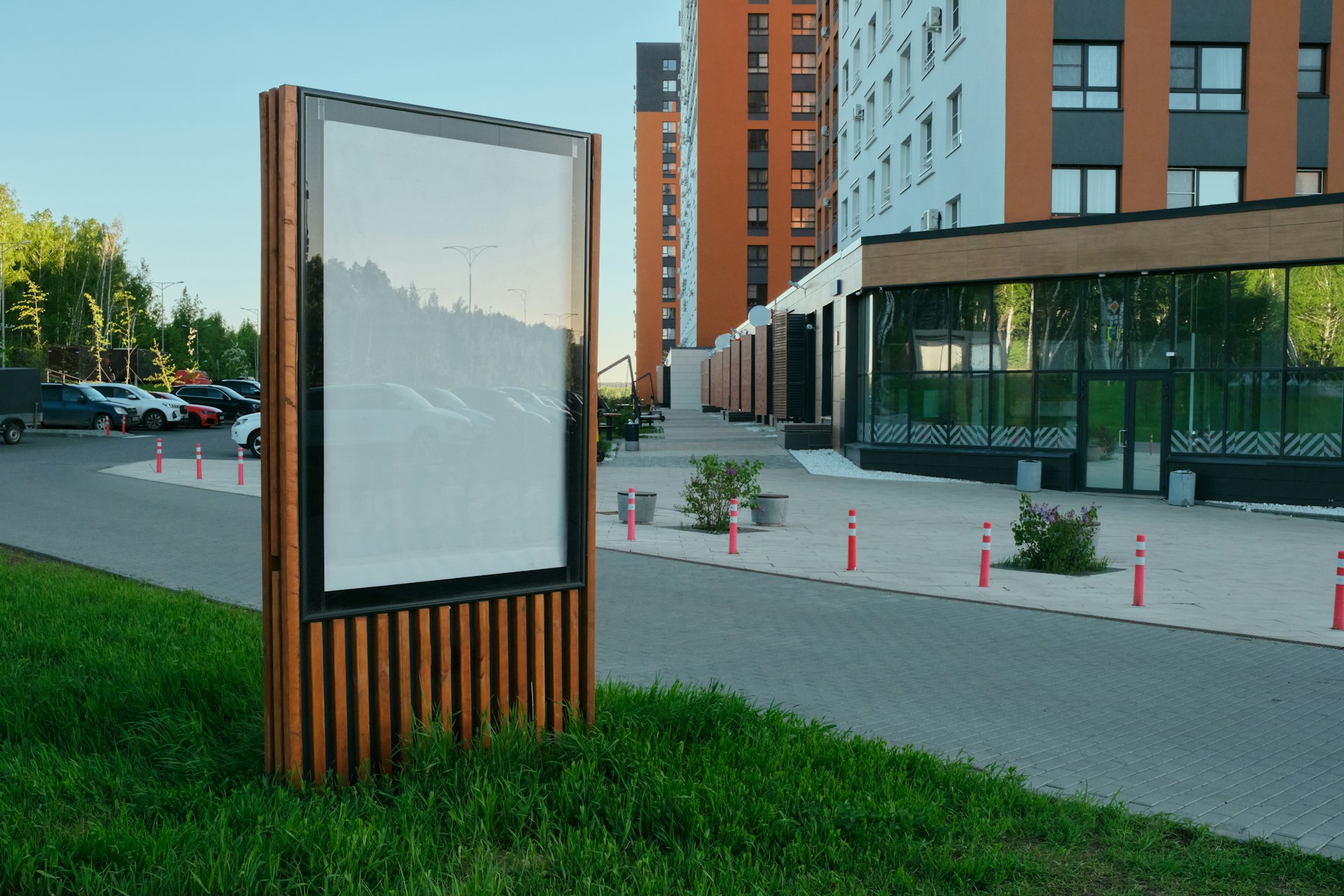Display graphics play a huge role in how grocery stores grab attention and guide shoppers through the space. Whether it’s a hanging banner promoting seasonal produce or signage in the frozen food section, each piece works hard to highlight products and build a strong feel for the store. These graphics face more than just wear and tear from foot traffic. Temperature can be one of the toughest things any graphic has to deal with day in and day out.
As the weather shifts outside, so do the conditions inside a store. Cold produce coolers, warm lighting, commercial AC systems, and heat from outdoor entry points can all affect how display materials hold up. From fading to peeling corners, these changes in temperature can weaken a graphic faster than you’d think. That’s why it’s important to understand how these conditions interact with materials used in grocery store settings. Helping customers make informed decisions starts with visuals that are clean, intact, and built to last.
The Role Of Temperature On Display Graphics
Graphics don’t just need to look good the day they’re installed. They need to stay that way through hot summers, cool falls, damp winters, and everything in between. Temperature shifts can put a lot of pressure on materials, especially when stores are running AC to keep things cool or blasting heat during the colder months.
Here’s how different types of temperatures come into play:
1. Cold Temperatures
When materials get too cold, they can start to contract and stiffen. This especially happens near freezers or cold produce sections. As vinyl or adhesives shrink, you might see the edges curl or lift. Materials that become brittle are more likely to crack or tear, especially if they weren’t installed with colder settings in mind. This is why installing the right kind of graphic in cold zones matters more than people realize.
2. Heat and UV Exposure
If a store has big front windows or sections that face the sun, direct light and warmth can slowly wear out graphics. Constant UV exposure can make colors fade much faster, especially reds and yellows, which tend to show the damage first. Heat works on adhesives too. When it gets too warm, glue behind the graphic can soften, leading to bubbling or slipping.
3. Humidity and Fluctuating Conditions
Some states deal with big swings in humidity, especially during seasonal transitions. High moisture in the air can make adhesive weaker or cause materials to swell. When that same graphic dries back out just a few hours later, it contracts again. That up-and-down cycle of expanding and shrinking can tear the material down over time, even if it looked solid on day one.
Think of a graphic near the deli, getting hit with steam during lunch rush, then sitting in cool dry air after closing. All those little shifts add up. If the materials weren’t rated for changing temps, they’ll start to break down before the promotion ends and no one wants that.
Picking the right materials for temperature-heavy environments is just as important as choosing the right design. If a graphic is placed near a vent, a window, or even a cooking station, those details matter. Whether a store is dealing with steaming rotisserie chicken or chilly seafood counters, pressure from the surrounding air affects how well the graphics hold up. Designing for that from the start helps prevent headaches down the line.
Seasonal Considerations For Grocery Store Displays
Temperature swings don’t just happen outdoors. Inside a grocery store, each season can bring its own unique set of issues for graphics. Heating systems, coolers, and entrance doors all affect how graphics behave and last. Planning with the seasons in mind helps prevent damage before it even starts.
In winter, stores often blast heat to offset what’s happening outside. This warm indoor air mixes fast with cold air every time the automatic doors open. That back-and-forth can make some materials expand and contract quickly, especially vinyl. It’s also common for graphics near heating vents to start loosening or drying out if they weren’t designed to handle the added exposure to warmth. For example, a floor sticker promoting hot soups might curl faster if it’s near the front door or under a heating vent.
During summer, AC systems are rolling all day to keep stores comfortable but some sections, like store windows, still catch direct sunlight. Graphics in those areas face a double challenge. Between the heat and strong UV rays, you’ll notice faster color fading along with glue that gets soft then dries too fast. This leads to peeling corners or that warped look when graphics start shifting on their own.
Then come transitional seasons like spring and fall. These times bring the most variety all in one day sunny mornings, humid afternoons, then a sudden cold breeze at night. If a store adjusts temperature controls multiple times, intense swings in the climate zone can occur indoors too. Graphics feel that shift. Short-term pop-up displays in these months need to be built from flexible material that adjusts without cracking or shrinking.
Businesses should think about where displays are located and what seasonal stress they’ll go through. Keeping each graphic in good shape starts with knowing what weather-modified zones exist inside a store because the conditions near the freezer and front door don’t have much in common.
Best Practices For Keeping Grocery Store Graphics Intact
Keeping display graphics looking clean and sharp means more than just wiping them down once a week. Some areas are naturally high-risk, so keeping up with care and using smart material choices makes a big difference over time.
Here are a few easy-to-follow tips that help grocery displays last longer, even with changing temps:
1. Check often. Walk the store and look for curling edges, bubbling, or fading colors. Finding problems early helps avoid full replacements.
2. Choose heat- and cold-resistant graphic materials. Some vinyl and adhesives are made to handle temperature swings without lifting or cracking. These can cost more upfront but usually last longer.
3. Talk with your installer about placement. Avoid placing graphics near high-humidity areas, like soup stations, or in spots that catch long hours of sunlight.
4. Stay on schedule. Rotate seasonal displays as needed and don’t let them sit longer than they should. Materials that overstay their timing window tend to wear down faster.
5. Match your maintenance with the season. In summer, check graphics more often if they’re near doors or windows. In winter, pay closer attention to those placed near heaters or other warm vents.
Taking small steps early on will reduce how often displays need to be reprinted or reinstalled. The goal is to have graphics that still look great, even if they’ve been through a full heating and cooling cycle.
Why High-Quality Graphics Matter All Year Long
No matter the season, grocery store graphics are tied directly to a customer’s shopping experience. They help shoppers find what they’re looking for, understand pricing, and get nudged toward current promotions. If the graphics are peeling, dull, or crooked, it stops a store from looking professional.
Even the best message can fall flat if the display around it doesn’t hold up. That’s why understanding how temperature affects materials isn’t just helpful. From choosing the right vinyl to placing graphics away from HVAC vents or sun-soaked surfaces, good decisions on the front end create better results over time.
Strong visuals in every section hot deli, cold cases, seasonal produce shouldn’t lose their quality just because the weather shifted outside. When properly selected and maintained, graphics not only work harder but also speak louder to anyone walking the aisles.
If it seems like a small part of the bigger retail picture, remember that first impressions often come from visual cues. Don’t let poor planning around temperature damage a display that’s meant to catch a shopper’s eye. Investing time into smart temperature-aware choices can keep your store looking fresh and ready every single day.
If your grocery store needs graphics that can handle everything from freezer zones to sunny storefronts, explore how our commercial fleet graphics offer durable solutions built for changing conditions. Hyperformance Graphics delivers expert design and installation to help your displays stay sharp year-round.



